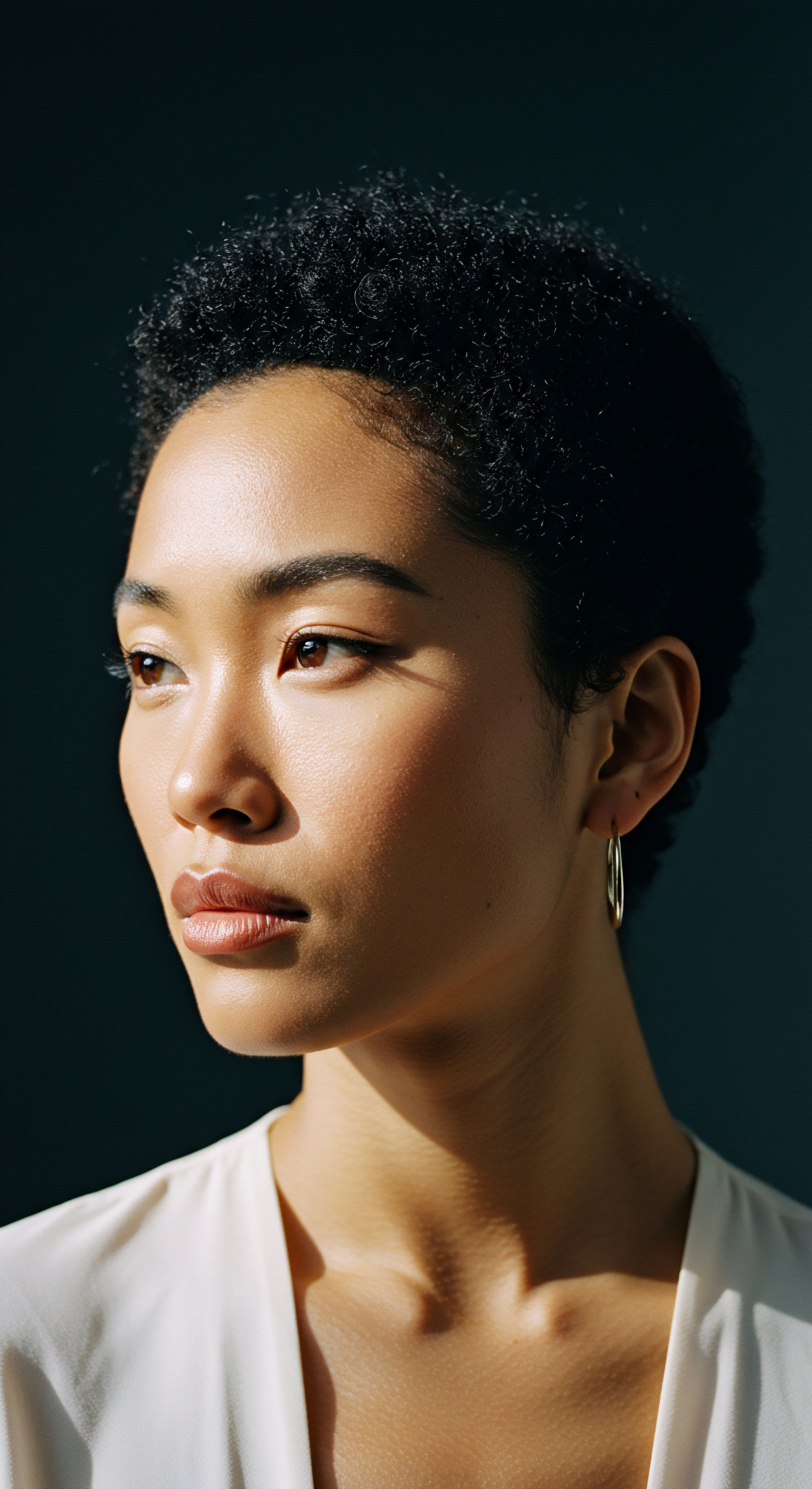
Roots
The very strands that crown us, sculpted by time and heritage, often stand as quiet testaments to who we are, where we come from, and the stories held within our lineage. Yet, for those with hair that coils and bends in defiance of linear expectation, this crowning glory can become a point of contention, a silent battleground where identity meets societal decree. Why, in this modern age, does the natural artistry of textured hair still invite judgment, exclusion, and overt bias? The question itself pulls at something deeper, something beyond mere aesthetics, reaching into the very core of selfhood and belonging.
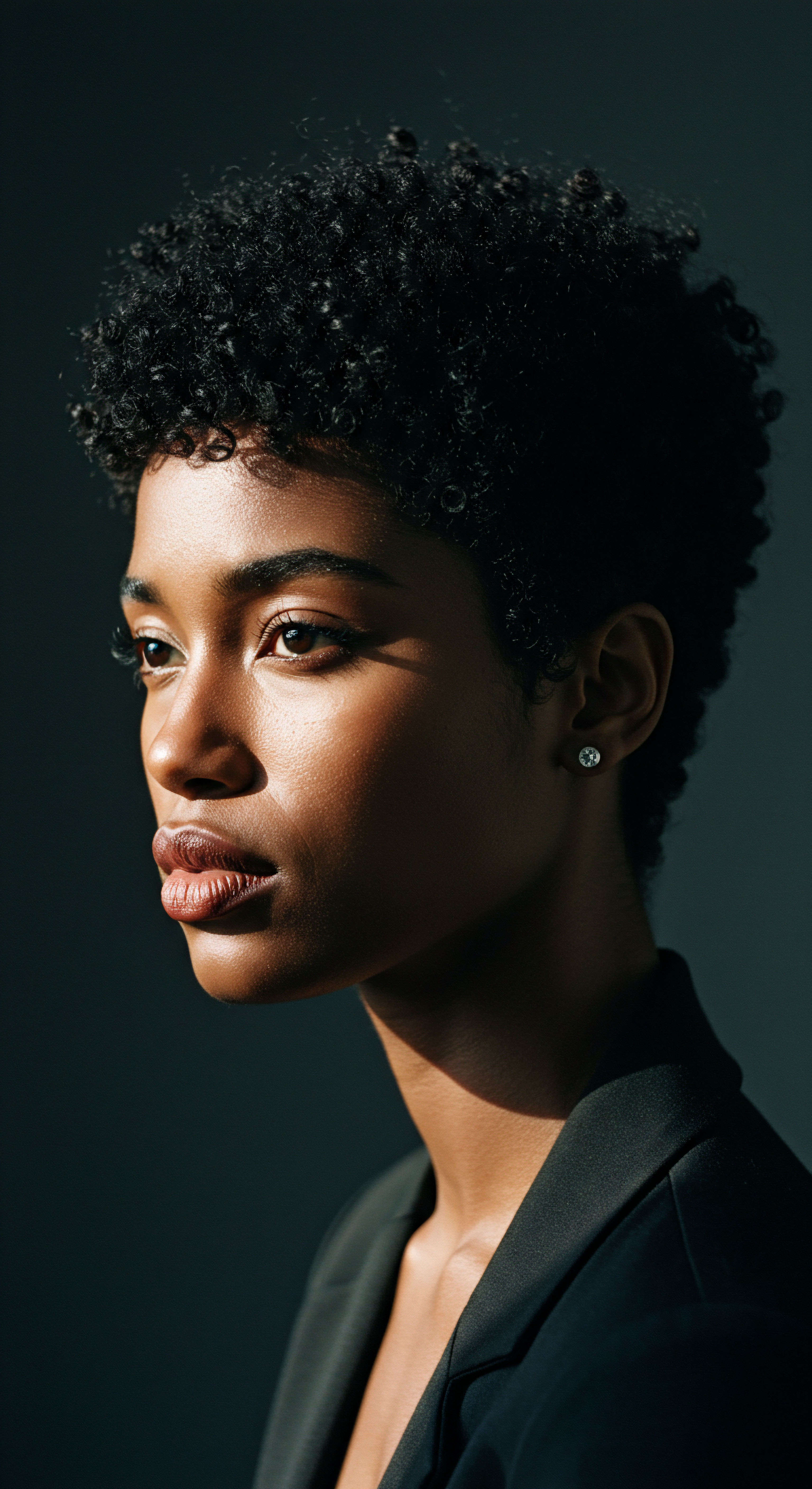
The Hair Follicle’s Unique Architecture
At its fundamental level, textured hair possesses an architectural brilliance unlike any other. Each strand, emerging from its follicle, carries a distinct elliptical or flattened cross-section, a departure from the more circular forms often associated with straight hair. This unique shape dictates how the hair grows, creating the characteristic curves, spirals, and zig-zags that distinguish curls, coils, and waves. The very structure of the follicle itself, often curved, guides the hair shaft into its destined pattern.
This structural variance extends to the cuticle, the outermost protective layer of the hair. In textured hair, these cuticle scales tend to be raised more often, contributing to a drier feel and a greater susceptibility to moisture loss. This natural inclination towards dryness means textured strands require a different approach to care, a more thoughtful ritual of hydration and sealing. To misunderstand this inherent difference is to misunderstand the hair itself, often leading to care practices that are counterproductive or even damaging.
The distinctive architecture of textured hair follicles and strands underpins its unique appearance and specific care needs.
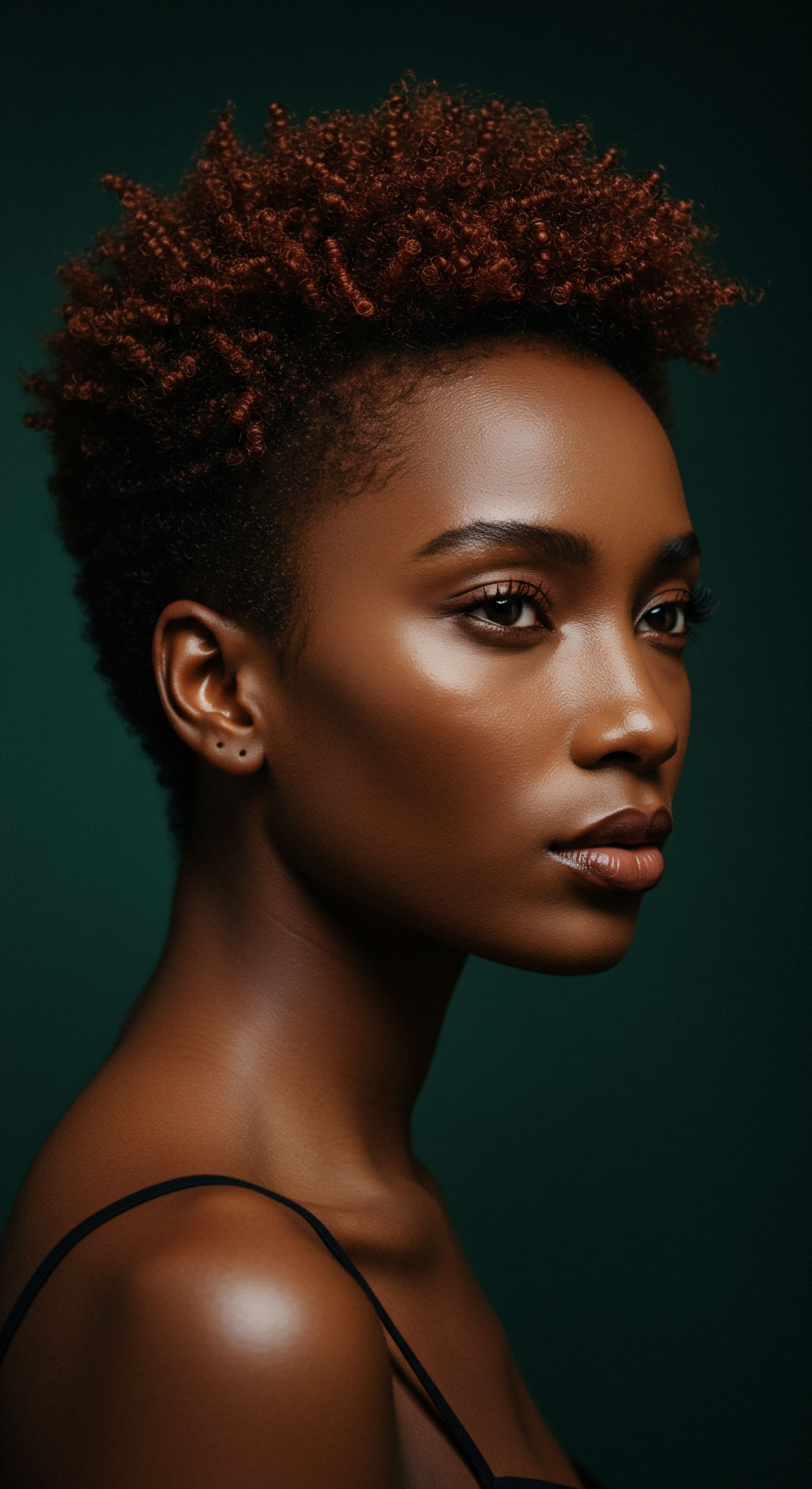
Understanding Hair Type Systems
Over time, systems have arisen to categorize the vast spectrum of textured hair. While no single system perfectly captures the infinite variations, they serve as helpful guides for understanding general characteristics. The most widely recognized, though sometimes debated, system classifies hair into types 1 through 4, with sub-classifications (A, B, C) that indicate the tightness of the curl pattern.
- Type 1 ❉ Generally straight hair.
- Type 2 ❉ Wavy hair, ranging from loose waves (2A) to defined S-shapes (2C).
- Type 3 ❉ Curly hair, with distinct loops and spirals, from loose curls (3A) to tight, springy curls (3C).
- Type 4 ❉ Coily hair, characterized by tight, often Z-patterned coils, from softer (4A) to dense, tightly packed coils (4C).
These classifications, while practical for product selection and styling guidance, have also inadvertently played a role in the broader societal perception of hair. Historically, tighter curl patterns, particularly those in the Type 4 category, have faced the brunt of societal devaluation, often labeled as “unprofessional” or “unkempt” in various settings. This perception is not rooted in any inherent deficiency of the hair itself, but rather in a deeply ingrained cultural bias.

The Language of Textured Hair
The vocabulary surrounding textured hair has evolved, reflecting both a growing celebration of its diversity and, unfortunately, the historical baggage of discrimination. Terms like “kinky,” “nappy,” or “frizzy,” once used pejoratively, are being reclaimed by many within the textured hair community. Yet, their past usage in discriminatory contexts leaves a lasting mark, reminding us of the power of words to shape perception and policy.
Conversely, a rich lexicon has emerged to describe the care and styling practices unique to textured hair ❉ “co-washing,” “detangling,” “protective styles,” “wash-and-gos,” and “deep conditioning,” to name a few. These terms signify not only methods but also a shared knowledge, a collective wisdom passed down through generations and increasingly shared across digital spaces. The very act of speaking this language can be an affirmation of identity, a quiet rebellion against a world that might prefer silence.
| Term Co-Wash |
| General Meaning Washing hair with conditioner only, avoiding shampoo. |
| Cultural/Social Significance A method prioritizing moisture retention, acknowledging hair's dryness. |
| Term Protective Style |
| General Meaning Styles that tuck away hair ends, reducing manipulation and exposure. |
| Cultural/Social Significance Often rooted in historical practices, offering versatility and growth. |
| Term Shrinkage |
| General Meaning The apparent reduction in hair length when wet or natural. |
| Cultural/Social Significance A natural characteristic, often misunderstood or devalued in contexts prioritizing length. |
| Term Pattern |
| General Meaning The natural shape of the hair strand (curl, coil, wave). |
| Cultural/Social Significance Central to identity, often the target of discriminatory judgments. |
| Term Understanding these terms provides insight into textured hair care and its cultural context. |

Growth Cycles and Influencing Factors
Hair, regardless of its type, undergoes a cyclical process of growth, rest, and shedding. This cycle includes the anagen (growth) phase, catagen (transition) phase, and telogen (resting/shedding) phase. While the fundamental biology is universal, various factors can influence the health and vibrancy of textured hair within these cycles. Genetics, nutrition, stress, and environmental conditions all play a part.
For individuals with textured hair, the delicate nature of the strands and their propensity for dryness mean that external stressors, from harsh weather to improper care, can have a more pronounced impact on the growth cycle. Understanding these internal and external influences allows for a more attuned approach to hair wellness, fostering an environment where hair can truly flourish. It is a quiet dialogue between the body, its environment, and the gentle hand of care.

Ritual
To tend to one’s hair is often more than a mere routine; it is a ritual, a quiet conversation between self and strand, a moment of presence in a bustling world. For those with textured hair, this ritual can carry layers of meaning, connecting us to ancestral practices, shared community wisdom, and a personal journey of self-acceptance. When this deeply personal practice encounters external judgment, the simple act of styling becomes imbued with profound social weight.
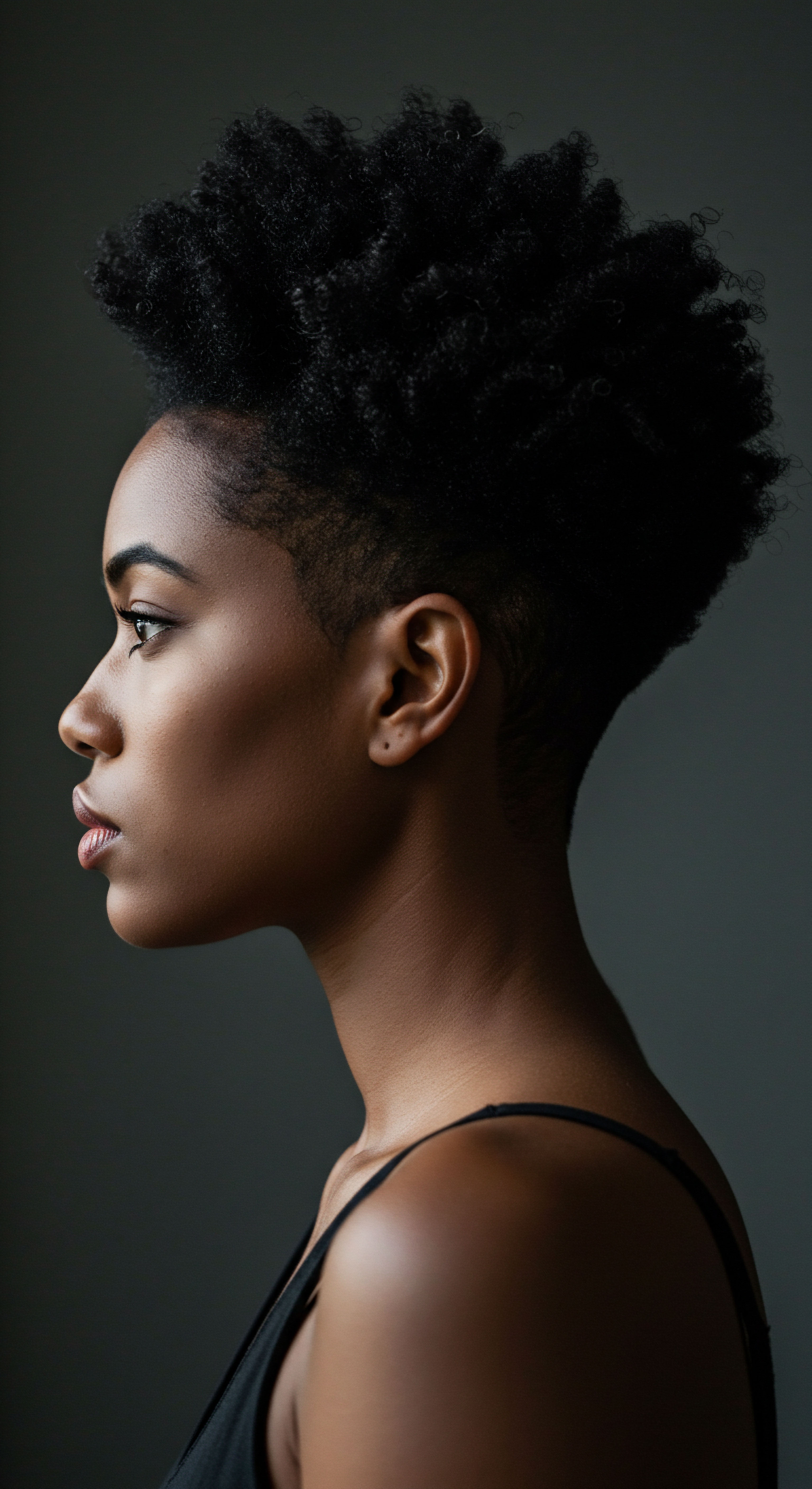
The Art of Protective Styling
Protective styles stand as a testament to ingenuity and a deep understanding of textured hair’s needs. These styles, such as braids, twists, locs, and cornrows, are designed to shield the hair from daily manipulation, environmental stressors, and breakage. They allow the hair to rest, to gather strength, and to retain moisture, contributing to length retention and overall health.
Beyond their practical benefits, protective styles carry immense cultural significance. Many have roots in ancient African traditions, serving as markers of identity, marital status, age, or tribal affiliation. They are not simply hairstyles; they are living legacies, visual narratives passed down through generations. To dismiss or demean these styles is to dismiss a rich cultural heritage, a vibrant expression of identity.
Protective styles, rooted in cultural tradition, offer both practical benefits for hair health and serve as powerful expressions of identity.
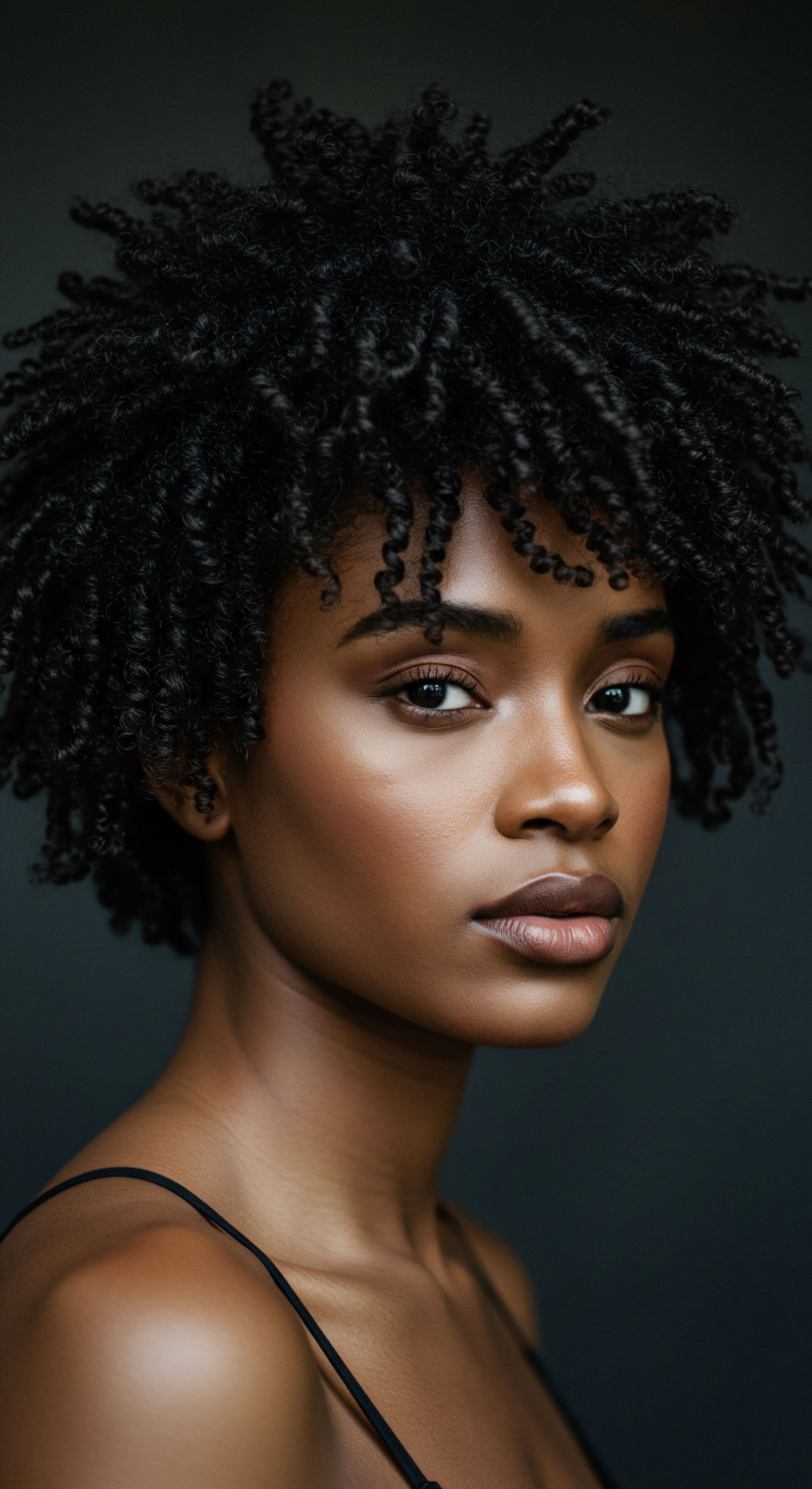
How Does Protective Styling Influence Perceptions?
Despite their deep cultural roots and practical benefits, protective styles frequently face scrutiny in professional and academic settings. Braids, for example, have been deemed “unprofessional” in corporate environments, and locs have led to outright discrimination in employment opportunities. This bias often stems from Eurocentric beauty standards that equate straight, flowing hair with neatness and professionalism. The paradox lies in demanding that textured hair conform to standards that inherently deny its natural form, often forcing individuals to choose between cultural authenticity and professional advancement.
The act of wearing one’s hair in a protective style can become a quiet declaration, a decision to honor heritage and hair health over the pressures of conformity. Yet, this decision often comes with the burden of potential misunderstanding or outright bias, highlighting the contemporary issue of hair discrimination.

Natural Styling and Definition Techniques
The realm of natural styling for textured hair is vast and creative, allowing individuals to celebrate their inherent curl, coil, or wave pattern. Techniques like wash-and-gos, twist-outs, and braid-outs are employed to define and enhance the hair’s natural texture, using water, leave-in conditioners, and styling gels to sculpt and set the strands. Each technique offers a unique expression of the hair’s natural form.
These methods are about working with the hair, rather than against it, fostering a sense of acceptance and admiration for its inherent beauty. The gentle act of defining a curl, allowing it to spring into its true shape, can be a deeply satisfying personal ritual. It is a quiet rebellion against the long-held societal pressure to alter, straighten, or minimize natural texture.
- Wash-And-Gos ❉ Involve cleansing and conditioning, then applying styling products to wet hair to allow the natural curl pattern to dry and set.
- Twist-Outs ❉ Hair is sectioned, moisturized, and twisted, then allowed to dry before being gently unraveled for a defined, stretched curl.
- Braid-Outs ❉ Similar to twist-outs, but using braids to create a stretched, wavy or curly pattern upon unraveling.

The Complete Textured Hair Toolkit
The tools used for textured hair care are as specific and varied as the hair itself. From wide-tooth combs and detangling brushes designed to gently separate coils without breakage, to silk scarves and satin bonnets that protect delicate strands during sleep, each item plays a distinct role in maintaining hair health.
Consider the humble spray bottle, filled with water or a moisturizing concoction, a constant companion for rehydrating thirsty strands. Or the microfiber towel, which absorbs excess water without roughing up the cuticle, preserving the hair’s natural definition. These tools are not mere accessories; they are essential instruments in the ongoing ritual of care, chosen with intention to honor the hair’s unique needs.
The availability and recognition of these specialized tools reflect a growing market and a broader cultural acceptance of textured hair. Yet, the necessity of these tools also subtly underscores the difference in care requirements, which can sometimes be misinterpreted as “high maintenance” rather than simply “different maintenance” by those unfamiliar with textured hair.
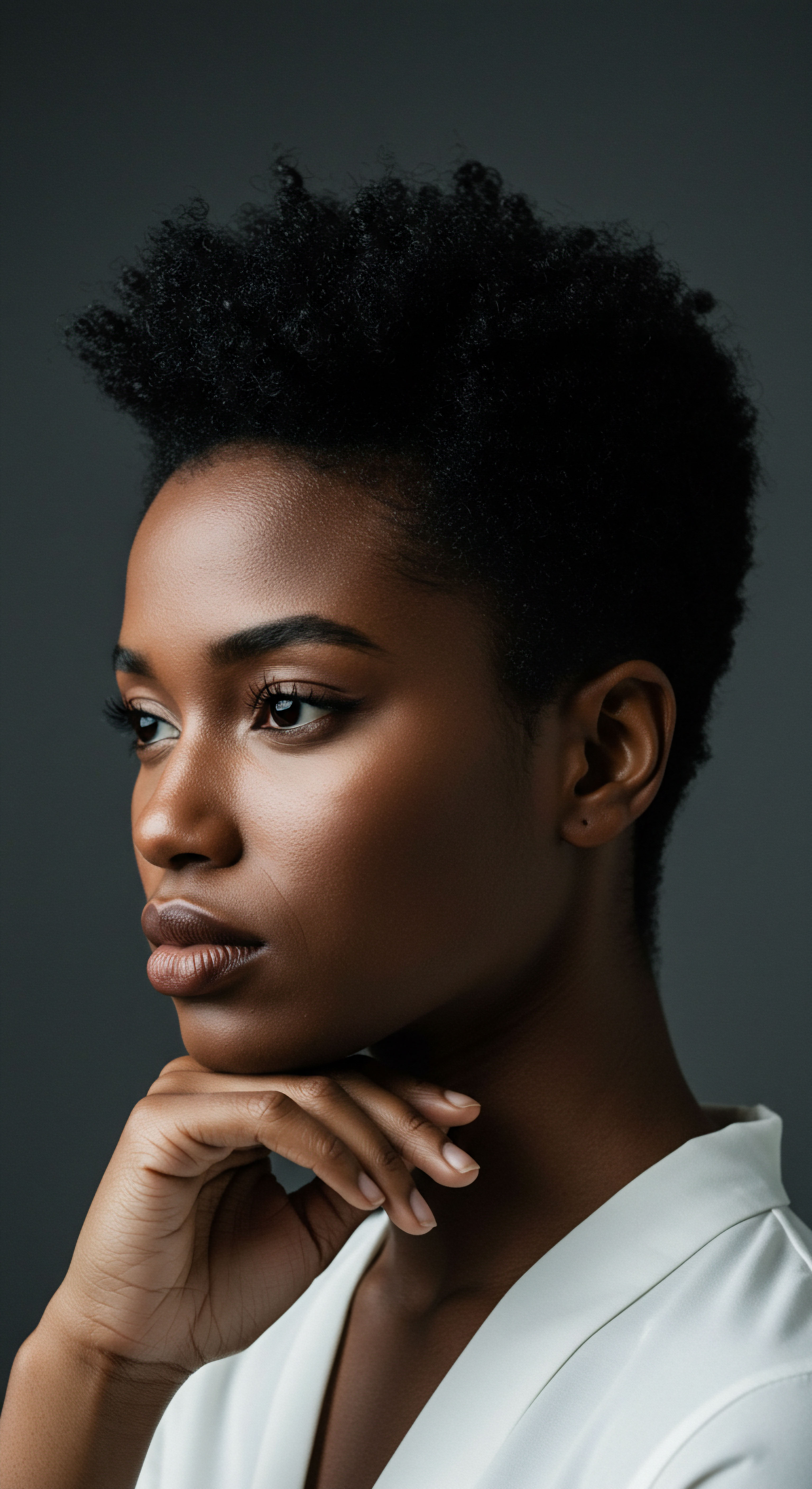
Relay
When we consider why hair discrimination against natural styles persists, we move beyond individual encounters and into the intricate interplay of history, systemic structures, and psychological undercurrents. It is a phenomenon that touches upon more than just appearance; it questions belonging, competence, and even the very right to exist authentically in certain spaces.

A Legacy of Aesthetic Control
The roots of hair discrimination are deeply intertwined with colonial histories and the transatlantic slave trade. Enslaved Africans were stripped of their cultural practices, and their hair, often a symbol of status and identity in their homelands, was deliberately denigrated. Head coverings were mandated, and hair was often shorn or neglected, a cruel mechanism of dehumanization and control. This historical trauma laid a foundation for the idea that Black hair, in its natural state, was somehow inferior or uncivilized.
Post-emancipation, the pressure to conform to Eurocentric beauty standards intensified, driven by a desire for assimilation and perceived upward mobility. Straightening combs and chemical relaxers became widely adopted, often at great physical and financial cost, as a means to navigate a society that favored European features. This long history of aesthetic control has left an indelible mark on collective consciousness, where natural Black hair is still often seen through a lens of prejudice.
Hair discrimination against natural styles is a persistent contemporary issue, deeply rooted in historical aesthetic control and systemic bias.
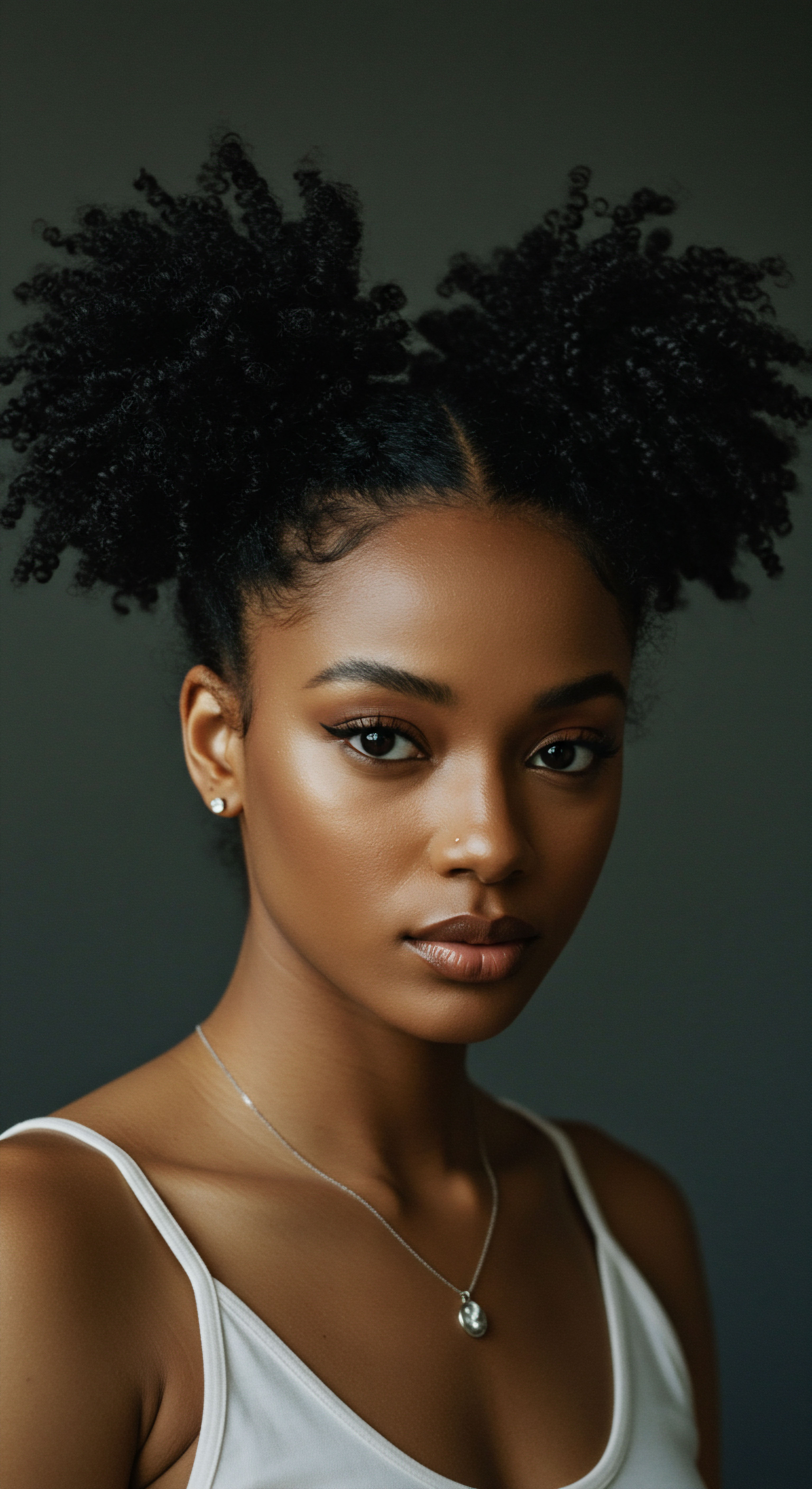
Systemic Barriers and Economic Realities
The discrimination against natural hair is not merely anecdotal; it is often embedded within systemic structures, particularly in workplaces and educational institutions. Policies, whether explicit or implicit, that deem natural hairstyles “unprofessional” or “distracting” create tangible barriers to advancement and opportunity.
Consider the economic ramifications. A study published in the Social Psychological and Personality Science journal in 2020, “Hair Bias in the Workplace ❉ Perceptions of Professionalism and Competence,” revealed that Black women with natural hairstyles were perceived as less professional and less competent than Black women with straightened hair, or white women with either straight or curly hair. The study found that Black women with natural hairstyles were often seen as less suitable for client-facing roles.
This perception translates into real-world economic penalties, impacting hiring decisions, promotion opportunities, and even salary potential. It means that the choice to wear one’s hair in its natural state can, in effect, carry a hidden professional tax, forcing individuals to invest time and resources into altering their hair to meet arbitrary standards.
Beyond the workplace, disciplinary actions in schools related to natural hair disproportionately affect Black students. These incidents can lead to missed instruction, suspensions, and even expulsion, creating educational disparities that have long-term consequences on academic achievement and future prospects. Such policies perpetuate a cycle where cultural expression is penalized, hindering holistic development.
| Domain Workplace |
| Manifestation of Discrimination "Unprofessional" policies against natural styles, bias in hiring/promotion. |
| Consequence for Individuals Limited career progression, reduced earning potential, increased stress. |
| Domain Education |
| Manifestation of Discrimination Disciplinary actions, suspensions for natural hair. |
| Consequence for Individuals Missed learning, negative self-perception, educational disparities. |
| Domain Social Settings |
| Manifestation of Discrimination Negative comments, unwanted touching, microaggressions. |
| Consequence for Individuals Emotional distress, feelings of otherness, diminished self-esteem. |
| Domain Media Representation |
| Manifestation of Discrimination Lack of diverse hair representation, perpetuation of stereotypes. |
| Consequence for Individuals Internalized bias, limited role models, skewed beauty standards. |
| Domain Hair discrimination has far-reaching consequences across multiple societal domains. |

The Psychological Weight of Othering
The constant scrutiny and judgment of one’s natural hair can carry a significant psychological burden. It fosters a sense of “othering,” where an individual’s inherent physical characteristics are deemed outside the norm, requiring alteration or concealment to be accepted. This can lead to internalized self-consciousness, anxiety, and a diminished sense of self-worth.
The repeated experience of being told one’s natural hair is not “good enough” can erode self-esteem and foster a feeling that one’s authentic self is unacceptable. This subtle yet persistent message can contribute to identity conflict, particularly for younger individuals navigating their sense of self in a world that often sends conflicting signals about beauty. The constant need to explain, defend, or alter one’s hair can be mentally exhausting, diverting energy that could otherwise be directed towards productive endeavors.

Why Does Natural Hair Still Present a Challenge for Many Institutions?
The challenge for many institutions lies in an ingrained cultural blindness, a failure to recognize and value diversity beyond a superficial level. It often stems from a narrow definition of professionalism that has historically been rooted in Eurocentric aesthetics. This definition, often unspoken and unchallenged, becomes the default, making anything outside of it seem “unconventional” or “disruptive.”
Additionally, a lack of understanding about textured hair care and styling can contribute to discomfort or bias. What appears “unruly” to an uninformed eye might simply be a natural state, a healthy coil, or a carefully crafted protective style. Overcoming this requires more than just policy changes; it necessitates a deeper cultural literacy, an education that dismantles preconceived notions and cultivates a genuine appreciation for the diverse forms of human beauty. It demands a shift in perspective, moving from tolerance to celebration.
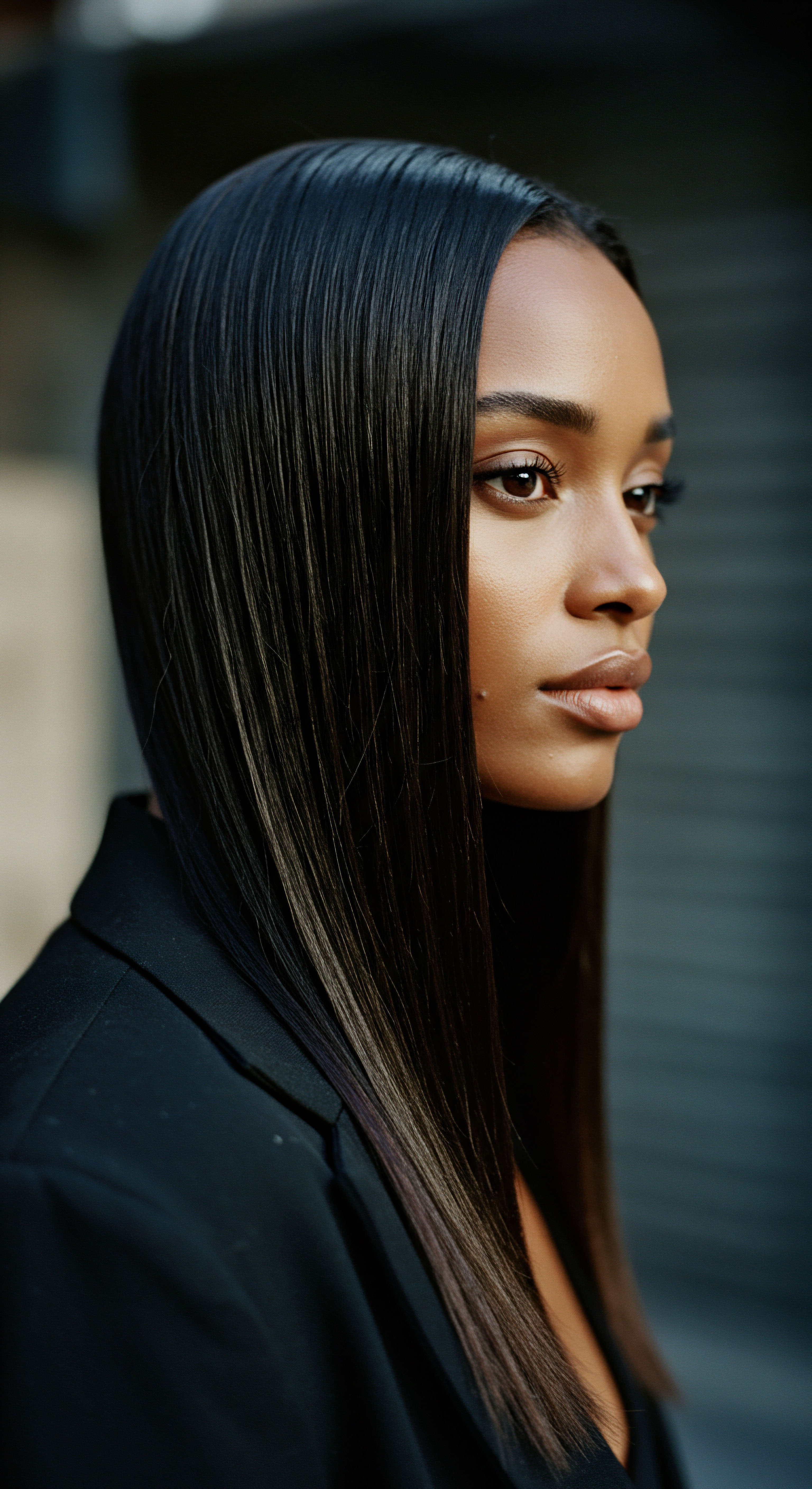
Reflection
The journey of understanding hair discrimination against natural styles is a quiet unfolding, revealing layers of history, cultural expectation, and personal resilience. It is a story not just of bias, but of the profound strength and beauty found in self-acceptance. As we look ahead, the hope remains that the spaces we inhabit will increasingly recognize and honor the full spectrum of human expression, allowing each strand, in its own glorious form, to simply be.
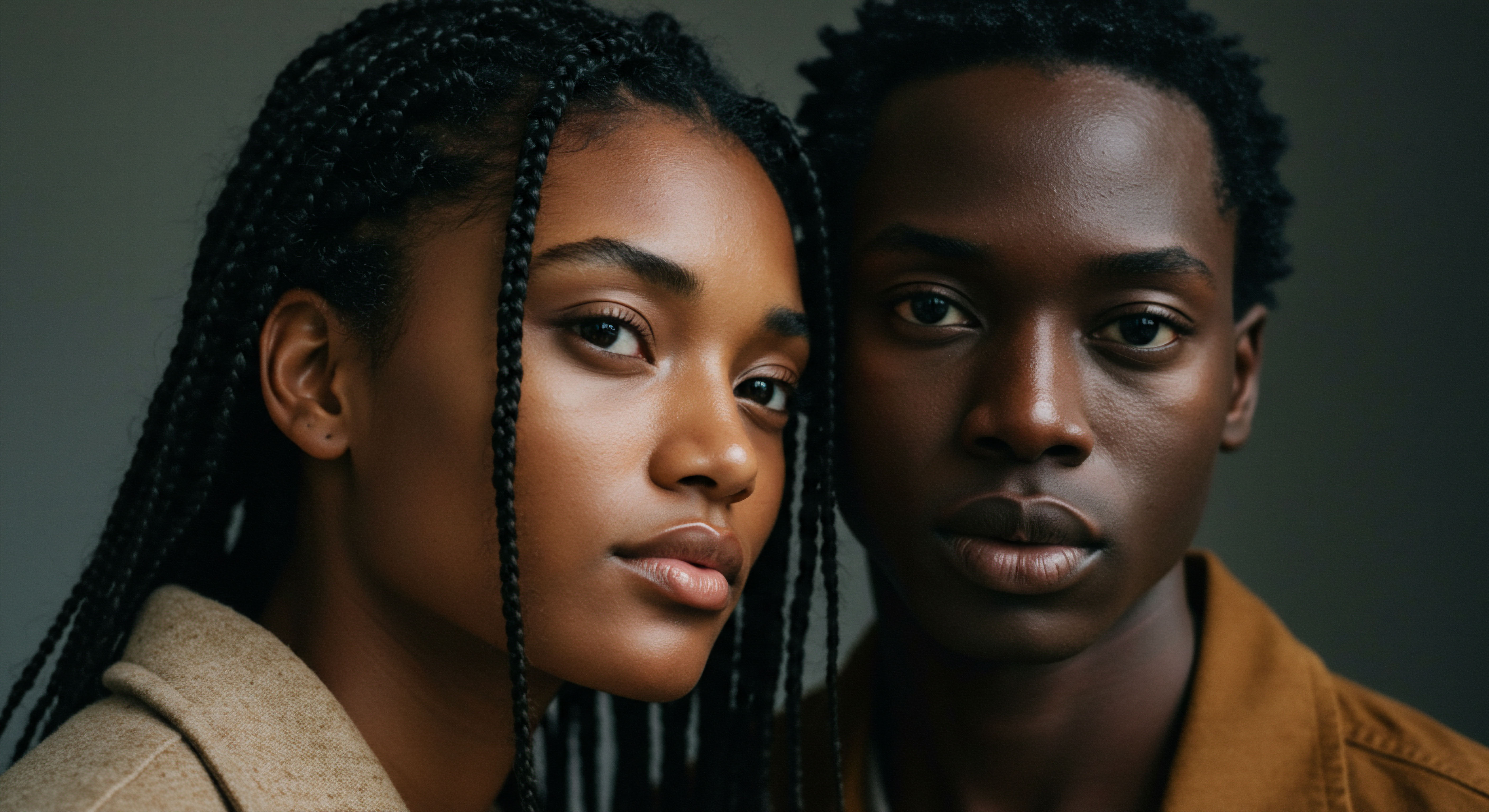
References
- Glick, P. & Fiske, S. T. (2020). Hair Bias in the Workplace ❉ Perceptions of Professionalism and Competence. Social Psychological and Personality Science, 11(3), 329-336.
- Caldwell, P. (2019). Hair Story ❉ Untangling the Roots of Black Hair in America. St. Martin’s Press.
- Byrd, A. D. & Tharps, L. L. (2014). Hair Story ❉ Untangling the Roots of Black Hair in America. St. Martin’s Press. (Re-edition of Caldwell & Tharps)
- Banks, I. (2000). Hair Matters ❉ Beauty, Power, and Black Women’s Consciousness. New York University Press.
- Mercer, K. (1994). Welcome to the Jungle ❉ New Positions in Black Cultural Studies. Routledge.
- Patton, T. D. (2006). Blowing the Lid Off the Text ❉ A New Poetics of the African American Subject. University of Massachusetts Press.
- Hooks, b. (1992). Black Looks ❉ Race and Representation. South End Press.